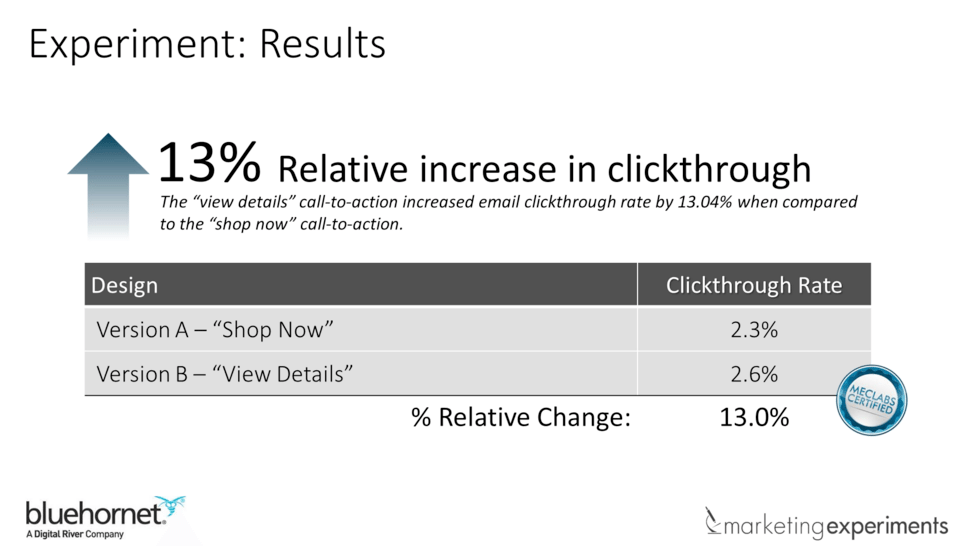As marketers, we know how important it is to have a call-to-action (CTA) incorporated in our marketing messaging. The team at Marketing Experiments, though, raised a question in a recent webinar: Are our CTAs asking too much too soon? In an A/B split test, the team sent out two email blasts that were identical in every way, except for their CTAs. One blast incorporated a CTA asking recipients to “Shop Now” while the other prompted recipients to “View Details.” Although the the click-through-rate was comparable for both CTAs, one CTA did perform better.
The team explained that the invitation to “View Details” outperformed “Shop Now” because it placed less pressure, less stress and less work on the recipient. The “View Details” button is considered a Value Positive Button. It presents an opportunity for the reader to gain something without commitment or additional work on their part. “Shop Now,” however, is a Value Negative Button, because it implies commitment and effort for readers. By using Value Positive language in your CTAs, the team asserts that you can improve your click through, your conversion, and your relationship with your customers.
“View Details,” “Learn More,” “See Options” and “See How It Works” are all great examples of Value Positive language that spurs customers to take action without the added pressure or implied commitment that a more direct and forceful CTA might offer.
What are your thoughts? Have you seen better results with copy that includes Value Positive phrases? Share your experiences with us!

